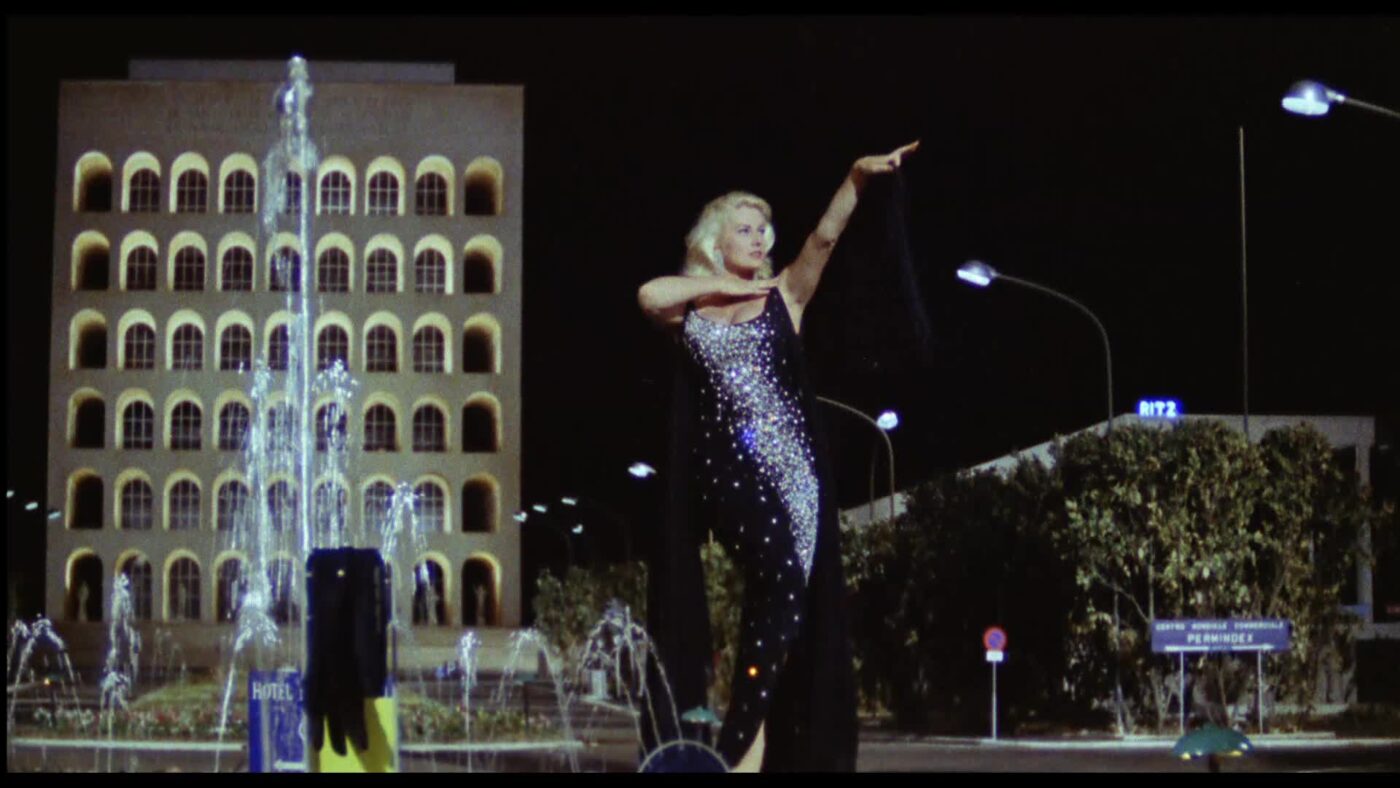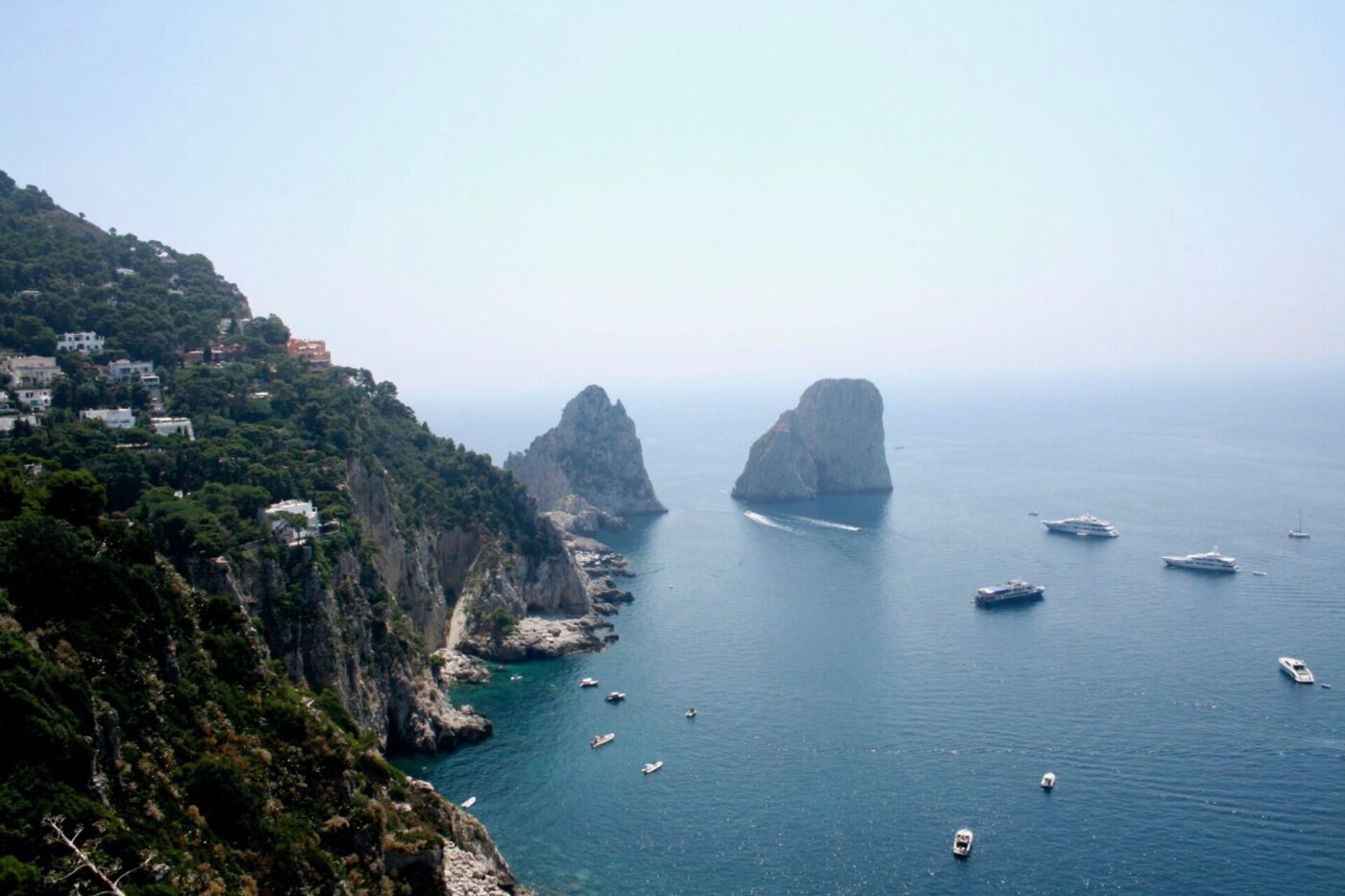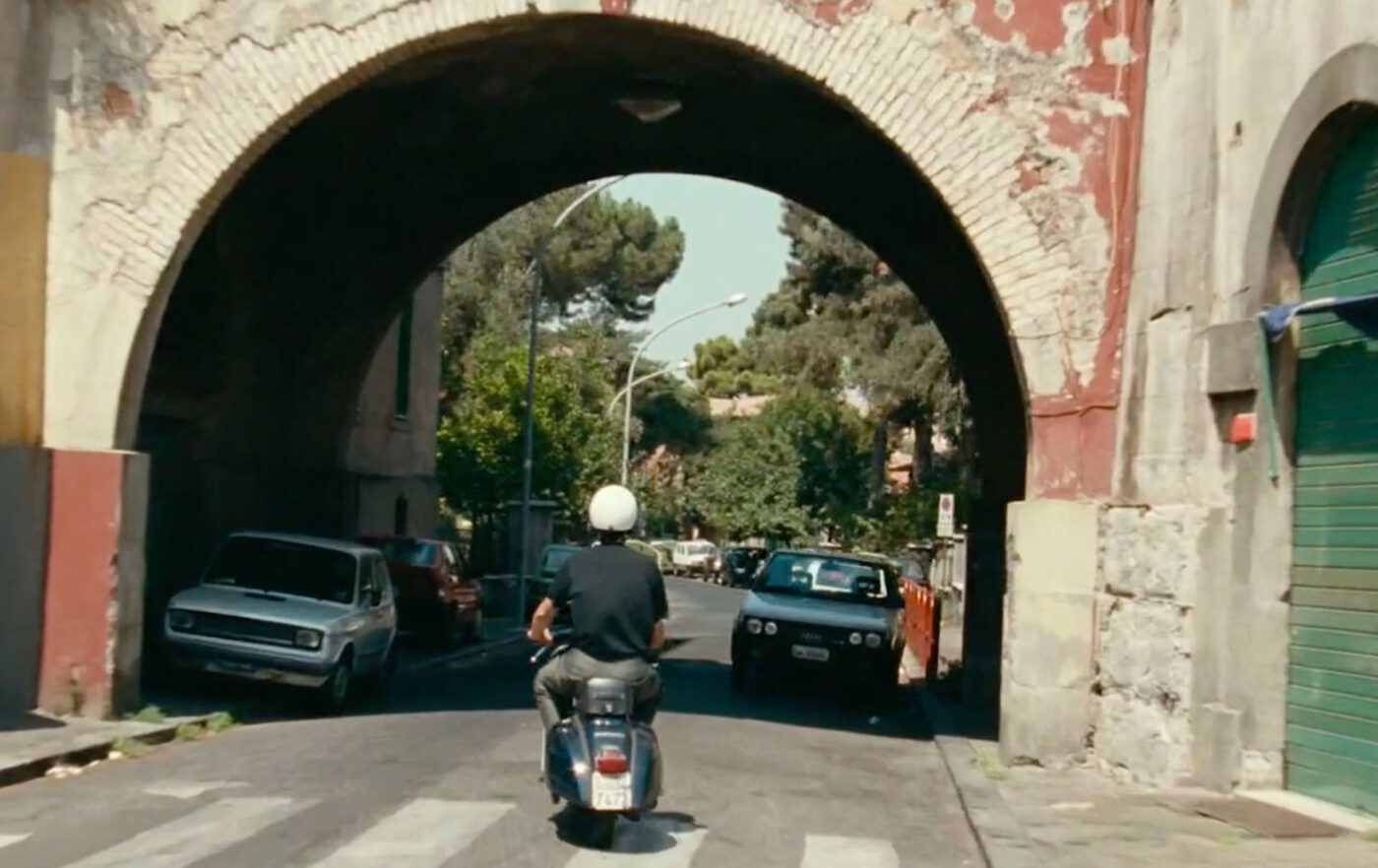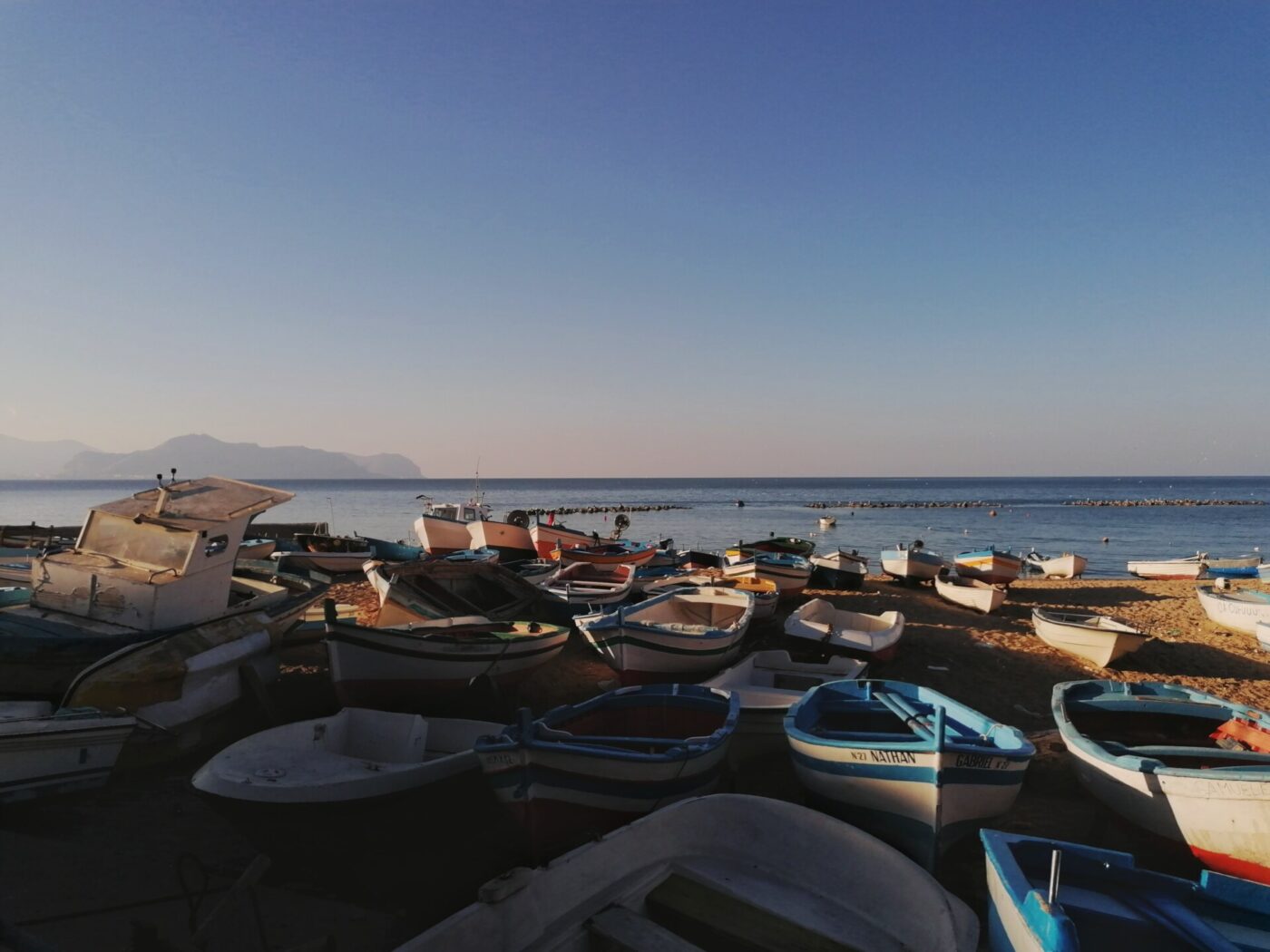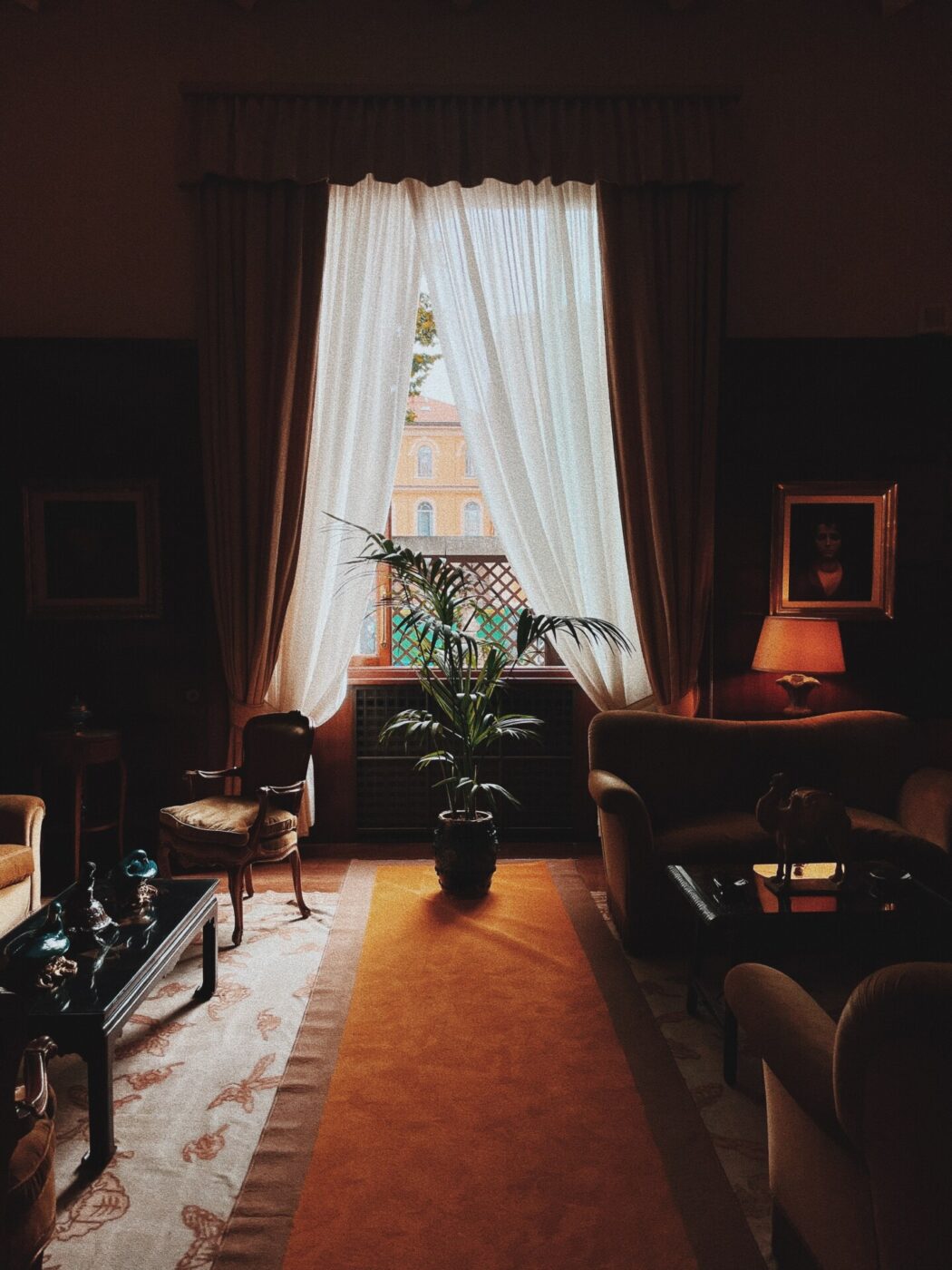Eur District, Rome
Le tentazioni del dottor Antonio (The Temptations of Doctor Antonio, 1962)
The two stars of the second act of the episodic film “Boccaccio ’70”, directed by Federico Fellini, are the stunning Anita Ekberg and the equally stunning architecture. The episode is a satire of the Italian political scene, following a fictional television host as he becomes embroiled in a product promotion scandal, and takes place in the Eur district of Rome where the monumental Palazzo della Civiltà Italiana (Palace of Italian Civilization), the Basilica of SS. Pietro and Paolo and the Congress Palace (built in 1938 for the 1942 Rome Universal Exposition) stand out. These abstract and metaphysical places perfectly merge into the film’s themes of media manipulation and use of public trust for personal gain–it’s hard to know what’s real and what’s not. Without a doubt, Le tentazioni del dottor Antonio is the most visionary, poetic and dreamlike episode of the film.

EUR palazzo della civiltà italiana
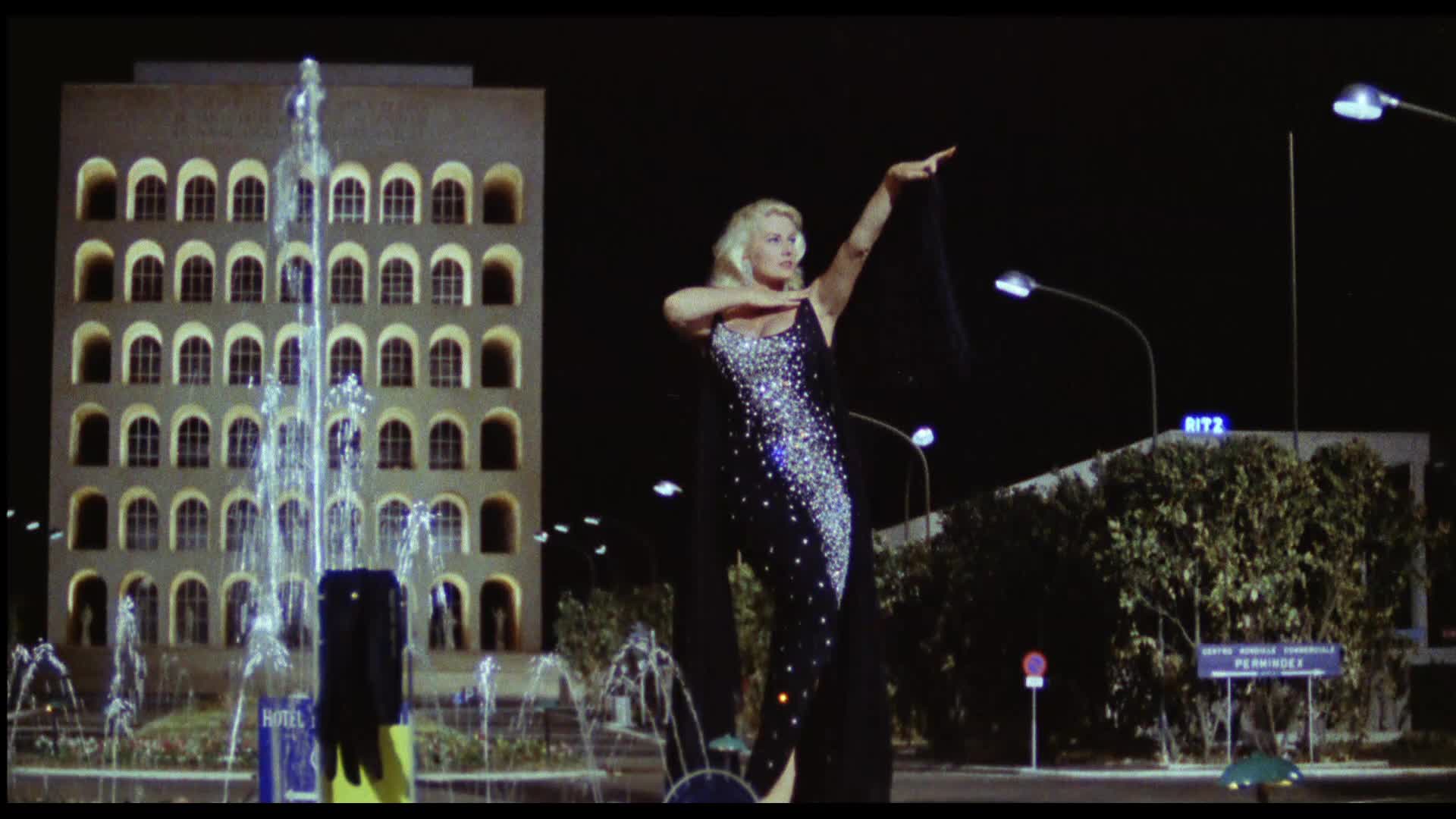
Villa Malaparte, Capri
Il disprezzo (Contempt, 1963)
Based on the eponymous novel by Alberto Moravia, this famous film, directed by Jean-Luc Godard, stars a divine Brigitte Bardot, part of a couple whose marriage is on the brink of collapse as she becomes increasingly dissatisfied with her husband’s work and his illicit relations. The filming takes place in Villa Malaparte (also known as Casa Malaparte) on Capri, a metaphysical context that perfectly matches the drama of a conjugal separation that expands from the interior, domestic walls to the exterior spaces. The iconic rationalist/surrealist house, designed by architect Adalberto Libera together with Curzio Malaparte, will become famous not only for its strategic position on the cliff (symbolism, anyone?), but for its particularity of design: a Pompeian red brick parallelepiped, dominated by an external, inverted pyramid-shaped staircase that leads to the roof-solarium.
We’ll never forget the scene in which a barefoot Bardot in a butter yellow robe traipses down these stairs, which widen as they reach towards a limitless sky.

Photo by Stephanie Draime & Eduardo Cerruti

Garbatella, Rome
Caro Diario (Dear Diary, 1993)
In the first episode (“On a Vespa”) of the semi-autobiographical comedy Caro Diario, Nanni Moretti (played by the director of the same name) wanders through a summery, semi-deserted Rome during the summer holidays, having surreal encounters that blend everyday life and Moretti’s musings on various topics. He visits neighborhoods he didn’t know existed, goes to the movies and even goes as far as Ostia to contemplate the bright white, modernist monument to Pier Paolo Pasolini. But the latter isn’t his favorite stop on his wanderings: “The thing I like most of all is seeing the houses, seeing the neighborhoods. And the neighborhood I like best of all is Garbatella,” Moretti says.
The working-class neighborhood of Garbatella was built in the 1920s as a solution to the housing crisis in Rome and was designed to be a self-sufficient community with its own schools, shops and public spaces. The architecture of Garbatella is a unique blend of traditional and modern styles, with elements of Art Nouveau, Art Deco, and Rationalism. Next to the Piazza di Sant’Eurosia–on one side of which is the “Chiesoletta” of Saints Teodoro and Eurosia, built in 1818–is the famous, faded red arch that Moretti drives his vespa under.
Through the neighborhood’s architecture–of both magnificent and completely ordinary style–we see Moretti reflecting on the sense of community and local identity in the context of a rapidly changing Rome.

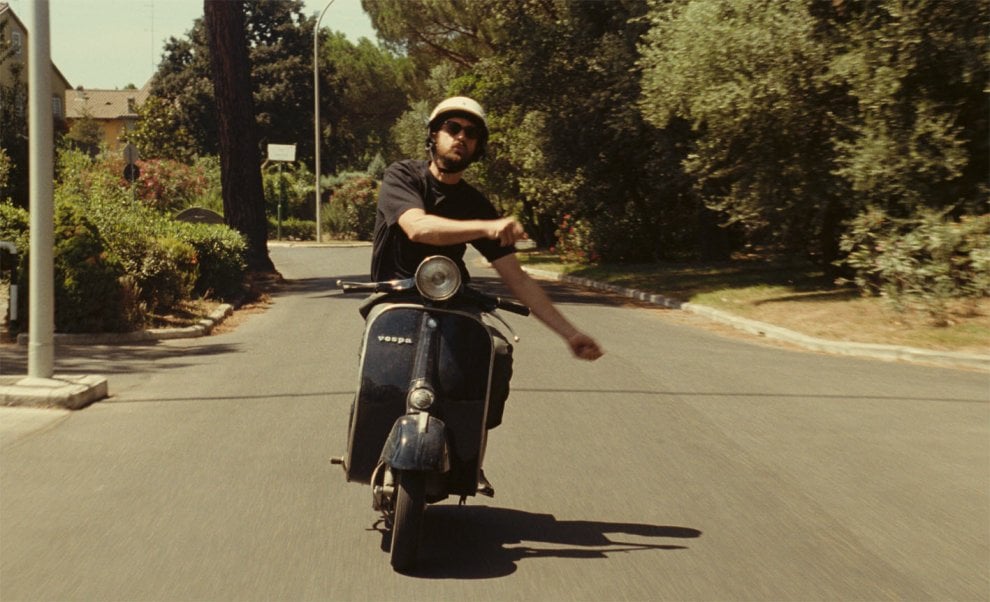
Villa Palagonia, Bagheria
Baaria (2009)
Set in Bagheria (in the province of Palermo), the hometown of director Giuseppe Tornatore, Baaria is a semi-autobiographical film which follows the political and social changes of the 1930s through the 1980s through the vicissitudes of a Sicilian family.
In the film, Villa Palagonia, also known as the “Palace of Monsters”, makes a few cameos and is a notable example of Sicilian Baroque architecture from the 18th century. At the behest of the villa’s commissioner, the eccentric Prince of Belmonte, an entire population of craftsmen and artists worked to create the inlaid floors, mosaics and stuccos that follow the lines of the walls and climb up to the ceilings. Elaborate and fantastical architectural decorations, such as grotesque masks and statues, cover the entryway, archways and facade of the building.
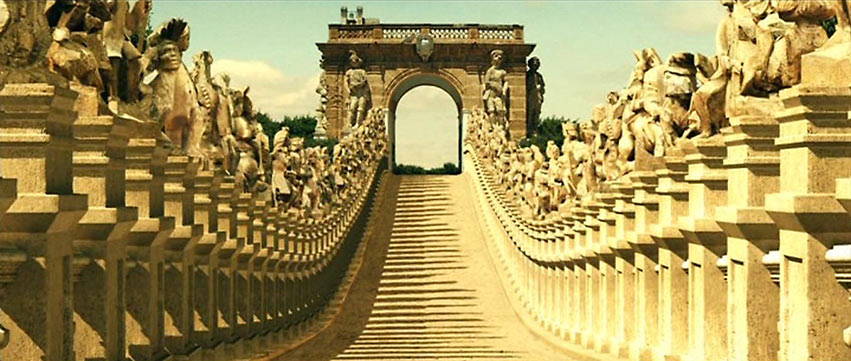

Bagheria, Palermo
Villa Necchi Campiglio, Milan
Io sono l'amore (I Am Love, 2009)
Although Tilda Swinton shines as Russian émigré Emma in the Luca Guadagnino film, the Recchi family home is the real protagonist of this screenplay: Villa Necchi Campiglio, a rationalist masterpiece of the 1930s located in Milan. Emma, who has married into the wealthy Recchi family, becomes more and more isolated from her family and falls in love with another, redefining her identity as a wife, mother and lover within the backdrop of the villa–designed by architect Piero Portaluppi in the 1930s as a summer residence for the wealthy, industrialist Necchi Campiglio family.
Over the film’s two hours, we see some of the iconic architectural features of Villa Necchi Campiglio: travertine floors, boxed in with green marble; a monolithic stone fireplace; an interior staircase with a mesmerizing, geometric wooden handrail; large sliding doors made of German silver; and a symmetrical facade with clean lines and large windows (typical of the rationalist style). Previously a party house for Milan’s “it crowd”, the villa is now open to the public as a museum.


Villa Necchi Campiglio

